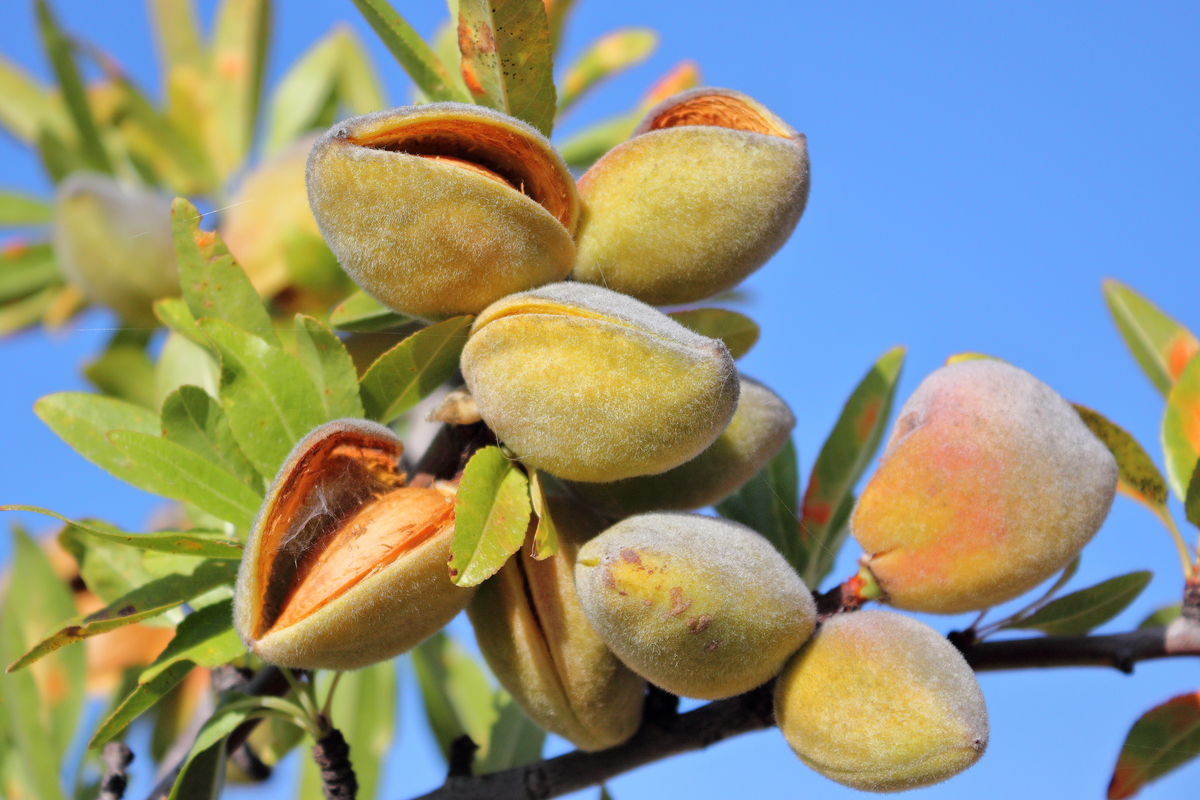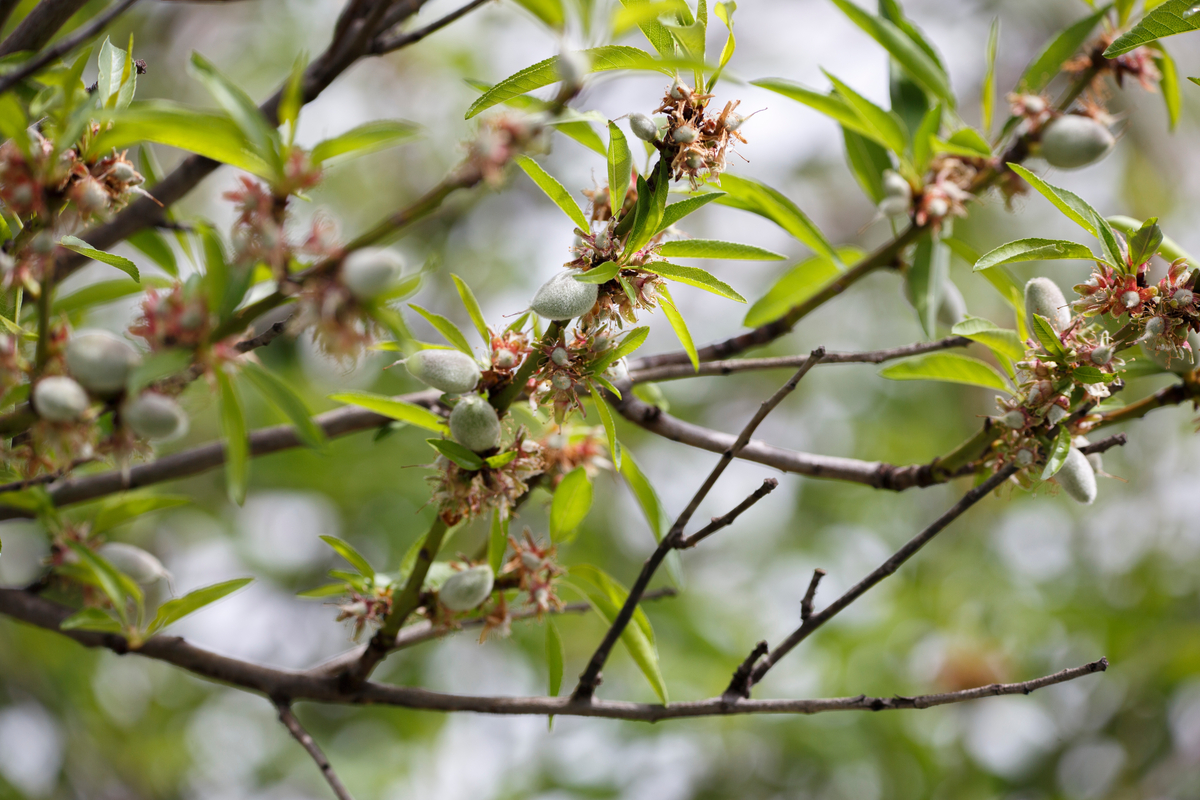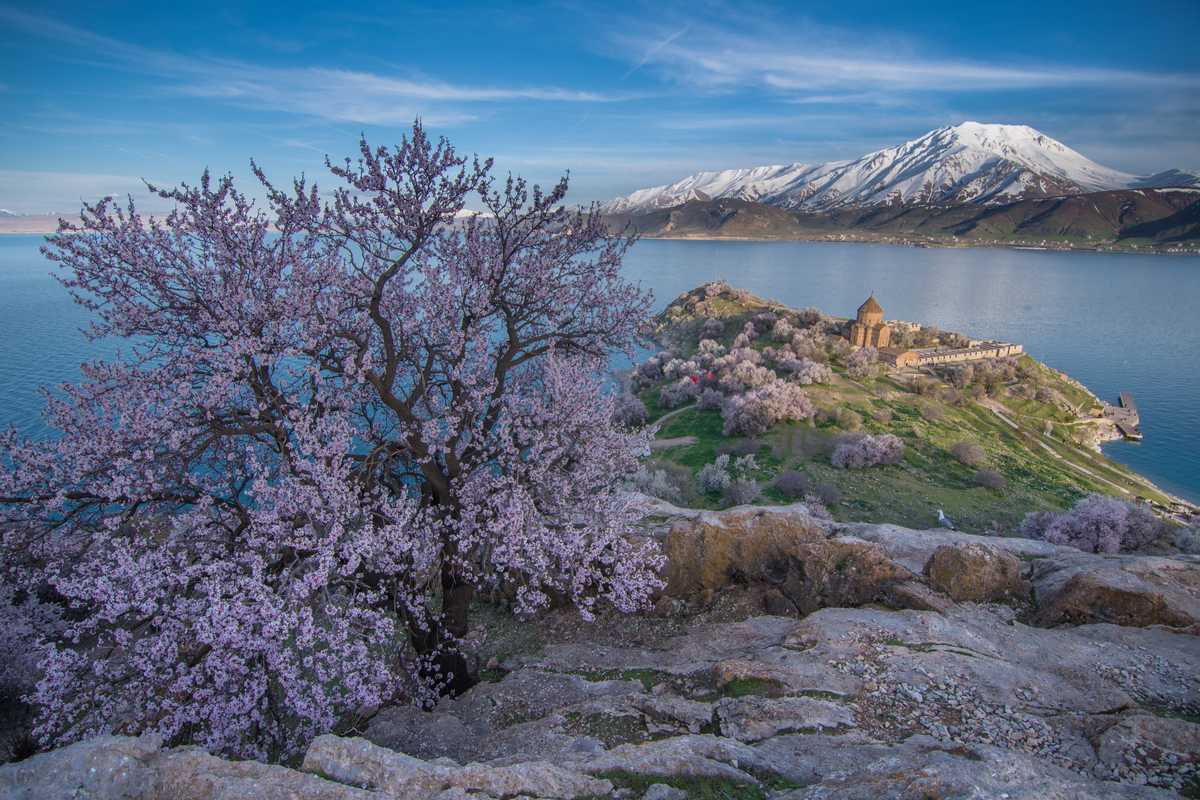Almond trees are native to several regions including the Mediterranean, China, and India. They were first cultivated in China about 2,000 years ago and are one of the oldest tree nuts known to man.

There are many different types of trees. Some are evergreen, while others are deciduous while some are flowering and others can be non-flowering.
Flowering almond trees bloom in spring and fall. Non-flowering almond trees do not flower. These trees grow straight up and down, producing almonds throughout the growing season
Almond trees are one of the most popular fruit trees in the world. They grow well in many different climates and produce delicious fruits. This article will explore the broad variety of almond trees.
1. Mission Almond Tree

The mission almond tree is classed as one of the most commercially cultivated almond trees that are harvested for its deliciously sweet and thick almond fruit. It looks similar to that of a cherry blossom tree in its appearance and the blooms it produces.
Though characterized as a relatively small tree, it is recognized for its dense canopy that can grow to 15 ft. Its soft pink-white blooms produce a strong sweet nut scent.
This sweet-scented tree is classified as being semi self-fertile and is known for thriving when pollinating with other almond varieties.
This variety of almond trees is said to grow well in well-drained soil. It is considered to be a significantly hardy tree as it can withstand both cold and hot climates.
2. Carmel Almond Tree

The Carmel almond tree originated from California. It is a widely commercially cultivated tree due to the delicious and high-quality nut that it produces. The Carmel tree is recognized for producing nuts with a thick yet soft shell seal. The fruit itself is loved for its sweetness and delicate light color.
The Carmel almond tree is classified as an early producer. The Carmel almond tree is valued not only for its sweet fruit but also for its abundant nature and easy harvest. The tree is recognized for its generous production but is classified as a relatively small almond tree.
3. Ne Plus Ultra Almond Tree

A ne plus ultra almond tree is one that produces almonds of the highest quality. It is grown in areas such as California, Spain, Italy, Greece, and Morocco. This type of almond tree has been developed over time through selective breeding.
The tree is able to produce large amounts of almonds at a young age without compromising on quality. It is said that this tree produces the best-tasting almonds in the world. It is commonly used by commercial growers because of its ability to produce large quantities of high-quality almonds.
4. Nonpareil Almond Tree

Nonpareil almond trees are native to China. They produce large crops of almonds every year. The tree has a long history of cultivation dating back to ancient times. It was originally planted in the province of Hebei.
Today, these almond trees are still found in the region where they were first planted. The tree is recognized as having a very good yield rate and is highly productive. However, it is also noted for its susceptibility to disease.
5. Monterey Almond Tree

The Monterey almond tree is characterized as a relatively small almond tree. It grows up to 10 feet tall and is often used as a landscape plant due to the way it tends to spread. It is recognized for its beautiful white flowers and bright green foliage.
These flowers have a strong fragrance and are ideal for attracting bees. The Monterey almond tree is classified as a mid-season producer. It is able to thrive in a wide range of temperatures and conditions. This means that it can be grown successfully in different regions around the globe.
6. Garden Prince Almond Tree

The garden prince almond tree is a small tree that is classified as a semi-dwarf tree that grows between 8-12 ft. tall. It is a popular choice among gardeners due to its compact size and attractive appearance. The tree is renowned for producing a large number of almonds each year.
It is also said to be resilient to drought and pests. It is suitable for growing in both sunny and shady locations.
Garden prince almonds are widely consumed as they are considered to be delicious and highly nutritious. Garden prince almonds are most commonly used for making almond milk due to their richness.
7. Durango Almond

Durango almond trees grow in Mexico. They are known for their unique flavor and nutritional value. Durango almonds are usually harvested after three years of growth. Their shells are thin and tender. They are also rich in antioxidants. Durango almonds are mostly used for making almond milk.
8. Ripon Almond Tree

This almond tree originated in Europe and is now cultivated all over the world. It is known for producing large amounts of almonds during the summer months.
Ripon almonds are recognized for their sweet flavor and rich aroma. They are mostly used for making almond paste and marzipan. Ripon almonds are also used to make almond butter and almond milk.
9. Sonora Almond Tree

The Sonora almond tree is an evergreen tree that produces large amounts of almonds during the winter months. It is classified as a dwarf tree with a height of 6-10ft. The Sonora almond tree is also hardy and thrives in warm weather conditions.
It is also tolerant of a wide range of soil types. The Sonora almond is one of the earliest flowering almond trees. Its blossoms appear in early spring and last until late fall. The tree is also resistant to diseases such as anthracnose and gray mold.
It is a preferred almond tree for commercial growers because of its fast growth rate and ability to adapt to various environments.
10. California Paper Shell Almond Tree

California paper shell almond trees are native to California. They grow well in coastal areas and are drought tolerant. The tree is recognized for producing edible nuts that are used in many foods. Paper shell almonds are available in grocery stores and farmers’ markets.
These almonds are harvested after the fruit matures and are picked off the tree before being dried. The California paper shell almond trees produce large amounts of nuts that are loved for their unique sweet and slightly fruity flavor. This type of tree grows well in dry climates and requires little water.
11. Fritz Almond Tree

Fritz almond trees are native to Germany, Austria, and Switzerland. They are known for having a very long life span. Fritz almond trees have been grown successfully in many parts of the world including North America, South Africa, Australia, and New Zealand. Fritz almond trees are commonly planted in orchards and gardens.
They are best suited for growing in temperate regions where summers are hot and winters are cold. The tree can tolerate temperatures down to -20 degrees Celsius.
The tree is also tolerant of wind and frost. Fritz almond trees are easy to grow and maintain. They do not need much care and they are suitable for both small and large scale production.
12. Price Almond Tree

Price almond trees originate from China. They are widely distributed throughout the world. Price almond trees are used commercially for producing almonds. The tree has a short lifespan but it produces large quantities of almonds.
The Price almond tree is a good choice for commercial growers who want to maximize profits. The tree requires less maintenance than other almond varieties. It does not require any special care and it is suitable for a variety of soils.
The Price almond tree tolerates high temperatures and low rainfall. Price almonds can be recognized by their dark, solid shell that contains a small light brown nut.
13. Mono Almond Tree

Mono almond trees originate from India. They are grown mainly for commercial purposes. Mono almonds are relatively small in size but they are considered to be quite tasty. They are often used to make sweets and snacks.
Mono almonds are also used in many recipes. Mono almonds are considered to be very healthy due to their high levels of antioxidants making them a popular choice of almonds.
14. Bouche De Rose Almond Tree

Bouche de rose almond trees originate from France. They are also known as ‘Rose’ almond trees due to their sweet and floral scent. They are also sometimes referred to as ‘wild’ almonds as they are commonly found growing wild throughout Europe.
Bouche de roses almond trees are considered to be fairly easy to grow. They are also well suited to most soil types. They are also resistant to diseases and pests. Bouche de roses almonds are considered to be delicious when harvested at the right time.
15. Padre Almond Tree

Padre almond trees originate from California. They are generally medium-sized trees that reach heights of around 20ft and are very tolerant to both summer and winter temperatures.
They are also resistant to diseases and pests. Padre almond trees are considered to have a strong and distinct taste and are considered to be good sources of protein and fiber.
16. Picholine Almond Tree

Picholine trees originate from France, Germany, Austria, and Switzerland. They are also called ‘French’ almond trees because they were originally introduced into France by French settlers. Picholines are usually smaller in size compared to other almond varieties.
They are considered to be more sensitive to cold weather than other varieties of almond trees. They are also susceptible to diseases and insect attacks. Picholines almonds are considered to be excellent sources of calcium and iron however are not widely commercially cultivated due to their flaws.
17. Thompson Almond Tree

Thompson trees originate from California and Mexico. They are also called Mexican almond trees because they were first brought over to Mexico by Spanish settlers.
Thompson almond trees are considered to produce some of the best-tasting almonds. They are also considered to be one of the easiest almond trees to grow and are recognized for being highly resistant to diseases and insects.
18. Winters Almond Tree

The Winters almond tree originates from Spain. It is classified as a crossbreed of other varieties of almond trees. The Winters almond tree is considered to be a hybrid between an Italian variety of almond trees and a Californian variety of almond trees.
Winters almond trees are considered to grow faster than other almond varieties. They also tend to produce larger amounts of almonds. Winters almond trees can be planted in any type of soil however they do require consistent water supply during the flowering stage.
19. Butte Almond Tree

Butte trees are considered to flower earlier than other almond varieties. This makes them ideal for early spring planting. Butte almond trees can be grown in almost all types of soils however they need a lot of sun exposure.
Butte almond trees have been shown to be extremely hardy and resistant to drought conditions. They are classified as considerably prolific compared to most almond trees and are known to grow vigorously.
20. Avalon Almond Tree

The Avalon tree originated from Australia. They are also known by the name ‘Australian’ almond trees. They are considered to have a distinctive flavor and aroma. Avalon almond trees are also considered to be relatively easy to grow. They also tend to be less prone to disease and pest attacks.
21. Makako Almond Tree

The makako almond tree produces fruit that has a unique taste and aroma. Makako almond trees are also considered as being hardy against drought conditions and cold conditions as they have been cultivated to withstand harsh conditions.
The variety of cultivated trees is considered to be significantly productive and grow vigorously.
22. Aldrich Almond Tree

Aldrich almond trees originate from Chile. They are also called Chilean almond trees because they were initially imported into the country by Spanish settlers. Aldrich almond trees are considered to be among the fastest-growing almond varieties and are popularly used for commercial production.
23. Carrion Almond Tree

The carrion almond tree is known for producing large quantities of almonds. Carrion almond trees are also considered very productive and are often used for commercial purposes. They are also considered as being extremely resistant to pests and diseases.
The carrion almond tree is considered to cross-pollinate well with the Butte and Fritz almond tree, however, it does not cross-pollinate with the Carmel almond tree.
Takeaway
Almonds are one of the oldest known tree crops in the world. They are widely cultivated and consumed for the broad variety of fruit that they bear.
The almond nut has long been used for culinary purposes due to its distinctly sweet, creamy, and nutty taste and texture. Each almond tree stands to offer something special and will continue to be a widely appreciated tree species.
Editor’s Recommendations
10 Awesome Trees That Start With O (Including Pictures)







